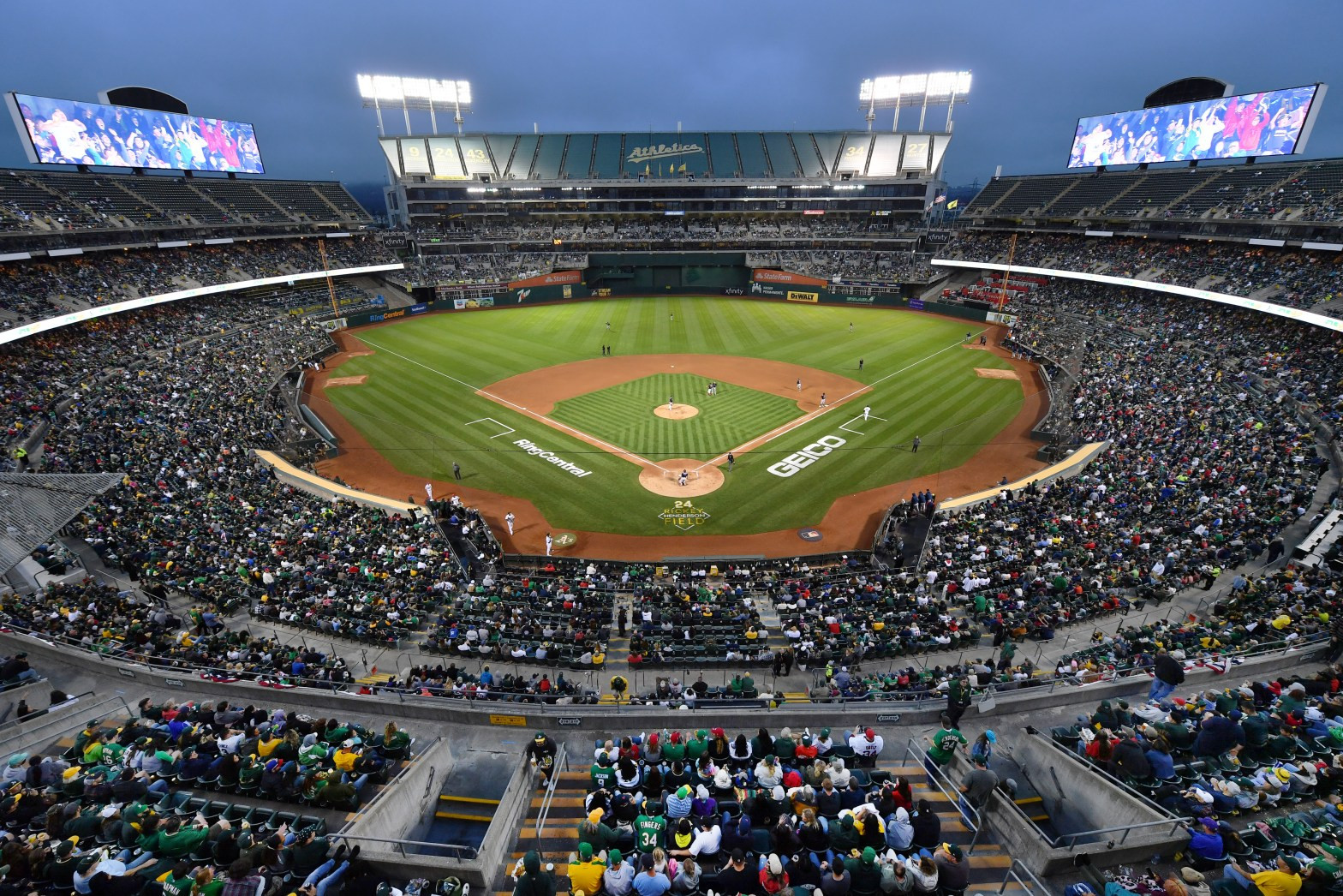On Thursday, September 26, the Oakland Athletics suit up in their iconic green “Oakland” jerseys for the last time as they play their final game at the Coliseum in front of a sold-out crowd of 46,847 fans. For 57 seasons, the A’s called this stadium in deep East Oakland their home. Next spring, they’ll be shipped off to Sacramento, where they’re slated to play three seasons before relocating to Las Vegas.
With their departure, we’re saying goodbye not just to a baseball team, (another) professional sports franchise in Oakland, or baseball’s last dive bar — we’re also bidding farewell to memorable individuals in the food space who made A’s games unlike most others in Major League Baseball.
To the untrained eye, the stadium itself isn’t a beauty. The Coliseum doesn’t have a shiny exterior, fancy amenities, or picturesque views. And yet, this hulking mass of concrete was the perfect place for unlikely legends to cement their place in baseball history.
In this building, Oakland fans got to see Rickey Henderson break the record for the most stolen bases in a single season; Vida Blue and four others win Cy Young Awards; and an underdog team go on an unprecedented 20-game win streak. This was the place where “The Wave” was first documented; the home of the Rally Possum; the originators of the “colorful” uniform; and where rapper MC Hammer famously got his start. (The Lonely Island also counts themselves as fans.)
It’s in this same space that we saw fans and employees of the Coliseum establish their own legendary food traditions — all driven by the same kind of ingenuity, necessity, and build-it-yourself mentality that fueled the Athletics organization for so many years.
Take Debbi Siyver. In 1971, this student from Bishop O’Dowd High School became one of the first ball girls ever to work in the MLB — another “wacky idea” started by the A’s that was soon adopted by other teams.
With the $5 an hour she earned from her new gig at the ballpark, Siyver bought ingredients to bake and refine recipes for cookies. During the middle of the game, she hand-delivered her chocolate chip cookies and cups of lemonade to umpires during unofficial “milk-and-cookie” breaks.
Six years later, the recently married Debbi Fields took that love of baking — cultivated by her time at the Coliseum — and founded the first Mrs. Fields’ Chocolate Chippery in Palo Alto. The brand gained popularity for its signature “soft and thick, straight-out-of-the-oven quality” and at its peak was a multi-million dollar empire with 780 stores around the globe.
Decades later, Hal The Hot Dog Guy took to the stands. To A’s fans, he was more than just a hot dog vendor who carried specialty mustards, sauerkraut, sriracha, and other fixings that weren’t available at the stadium. He was a true fan, a consummate entertainer, a vocal activist, and the likely instigator of a “Let’s Go, Oakland!” chant. Dressed in his unmistakable red-and-white pinstripe vest, Hal became an indelible part of the fan experience in Oakland.
“He’s part of the baseball nostalgia,” said Nate, an A’s fan who had been coming to games since the 1970s. “He became the hot dog guy there. It’s something we always looked forward to, and he’s a huge part of the loss of the A’s...he’s my guy.”
But true to the Oakland A’s experience, it’s the fans that ultimately defined the food scene at the Coliseum. Without $21 crab sandwiches or “world famous” hot fudge sundaes to seek out inside, A’s fans took to the parking lot to tailgate — a special, longstanding tradition that’s seen at few other Major League ballparks.
Some fans show up with Double-Doubles from In-N-Out Burger and burritos from a local Mexican joint. Others come with more elaborate set ups, ready to serve up crab legs and oysters or grill carne asada for tacos. Still others yet organized official tailgates to bring the community together. Regardless of how they chose to grub, this experience bonded fans together even before they stepped foot inside the hallowed concrete halls of the Coliseum.
On Thursday, fans will shut down their grills, unplug their speakers blasting E-40, and pack up their coolers for the last time. Soon, the Athletics will relocate and attempt to capture the on-the-field magic that put them in the history books. Whether fans will continue to follow the team after this season has yet to be seen.
But one thing is clear: While “Oakland” will never appear on an A’s jersey again, the legacy, the community, the food culture forged at the Coliseum can never be erased.

















